Women in Cuba: Education & Employment Before the Revolution
The fourth of six installments from “Cuba Since the 1959 Revolution”
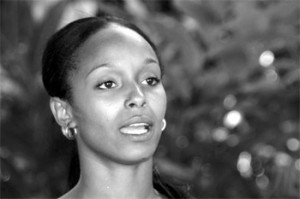
HAVANA TIMES, Dec 13 — In addition to the impact of the legal and political changes implemented during the first fifty years of the Cuban Republic, traditional Spanish gender relations were affected by the significant, although limited, economic development brought about by the North American imperial masters who replaced the Spanish colonial overlords in 1898.
The effect of this type of economic development was highly distorted, as reflected, for example, in the huge gap in living standards it perpetuated between city and countryside.17
However, it brought about important material transformations on the island and had the unanticipated effect of introducing a degree of “Americanization” into Cuban culture,18 which further blunted the edge of the prevailing Spanish patriarchal relations.
The main areas affected by this transformation were education and employment. By the 1950s, the proportion of females between five and fifteen years of age attending school was almost equal to that of males. The proportion of males who were illiterate (26 percent) exceeded that of females (21 percent), and only Argentina had a higher female literacy rate in Latin America (85 percent).19
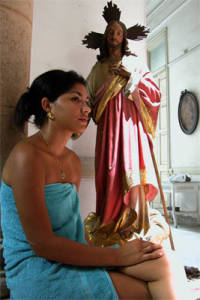
According to the 1953 census, women constituted 37 percent of university graduates.20 By 1956–57, 45 percent of university students and 22 percent of professors were women. They were concentrated in certain professions: in the late 1950s, 622 women were studying in pharmacy, 430 in law, and 388 in philosophy and letters; only 7 women studied agricultural engineering, 4 civil engineering, and 3 electrical engineering.21
Part 1: Cuba, The Unity of the People
Part 2: Cuba’s Workers After the Revolution
Part 3: Understanding Racism in Post-Revolution Cuba
Clearly, it was not exclusion but the gender division of labor that led women, particularly in the middle class, to be socialized and channeled into particular careers and professions. In any case, only a small proportion of young Cubans attended university at this time.
The gender division of labor was also evident in the labor market. Before the 1959 Revolution, the great majority of women were homemakers. According to the 1953 census only 13.7 percent of adult women were employed outside the home, and more than one-quarter of these were domestic workers22 who were not protected by any labor or social legislation.
Women were well represented (46 percent) in the professions and semiprofessions and were overrepresented in teaching, philosophy, and nursing. They constituted 82 percent of the teachers, 81 percent of social workers, and 68 percent of pharmacists.
But women were only 13 percent of medical doctors, 17 percent of lawyers, and 5 percent of administrators and managers. They were also underrepresented (between 15 and 20 percent) among white-collar workers, and greatly underrepresented (between 2 percent and 10 percent) among blue-collar workers.23
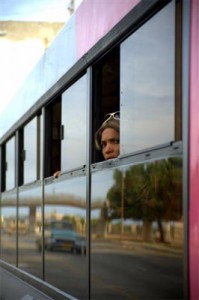
Significantly, women tended to occupy the extremes of the Cuban occupational structure. On one hand, as I indicated earlier, more than one-fourth of women working outside the home were domestic servants, while on the other hand, women accounted for more than 55 percent of professional and technical workers (38,616 out of 70,018).24
North American and European observers have tended to confuse the visibility and even flamboyance of prostitution in Havana with the quite different matter of its relative weight and importance within the Cuban economy and society as a whole.
Thus, for example, Lourdes Arguelles and B. Ruby Rich argue that the only occupational sectors showing substantial growth in the fifties were tourism, drug distribution, gambling, and prostitution.25 However, they provide no data supporting this contention and largely ignore the general economic context of the island in that period.
In 1956, a high year for tourism, that economic sector earned thirty million dollars, which was barely 10 percent of what was earned by the sugar industry.26 Nor do Arguelles and Rich say a word about the very large construction industry.
This industry was attracting huge amounts of very conservative Cuban capital into the residential sector. Foreign capital was flowing into the facilities being built by the Moa Bay Mining Company for the mining and concentration of nickel and cobalt in eastern Cuba in the fifties,27 and of course, into hotels for tourists as well.
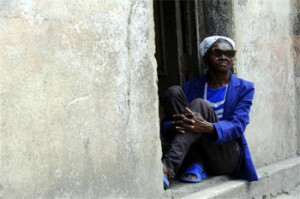
To get some perspective on the issues of tourism and prostitution in the fifties we should consider that somewhere between 200,000 and 250,000 tourists visited Cuba every year in the fifties, compared with well over two million for most of the first decade of the twenty-first century.28
Meanwhile, the population of Havana only doubled during those fifty years.29 It is estimated that by the end of the decade of the fifties there were 270 brothels and 11,500 women earning their living as prostitutes in Havana (there were far fewer prostitutes working outside of the capital).
As shocking as the latter figure is, it pales in comparison with other data provided by the 1953 census for Cuban women overall. According to that census 87,522 women were working as domestic servants, 21,000 women were totally without employment and looking for work, and another 77,500 women were working for a relative without pay.
Moreover, an estimated 83 percent of all employed women worked less than ten weeks a year, and only 14 percent worked year-round.30 These were the far more shocking realities of the uneven development induced by the US empire and Cuban capital on the island, although they may not be as risqué and exciting to North American and European observers, whether left or right, interested in Cuban exoticism and difference.31
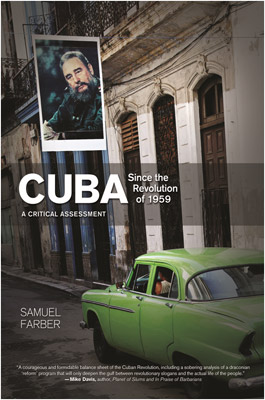 Footnotes:
Footnotes:
17. See the first chapter, “The Prerevolutionary Economy: Progress or Stagnation?,” of Farber, The Origins of the Cuban Revolution Reconsidered, 7–33.
18. For a thorough and comprehensive account of US cultural influence in Cuba, see Louis A. Perez, On Becoming Cuban (Chapel Hill: University of North Carolina Press, 1999).
19. Bunck, Fidel Castro and the Quest for a Revolutionary Culture in Cuba, 89. Of course, literacy rates were lower in the Cuban countryside. Again, this issue is explored and length in the first chapter, “The Prerevolutionary Economy,” of Farber, The Origins of the Cuban Revolution Reconsidered.
20. Smith and Padula, Sex and Revolution: Women in Socialist Cuba, 89.
21. Ibid., 89.
22. Isabel Larguía and John Dumoulin, “La mujer en el desarrollo: Estrategia y experiencias de la Revolución Cubana,” Casa de las Americas 25, no. 149 (marzo–abril 1985): 39.
23. José A. Moreno, “From Traditional to Modern Values,” in Revolutionary Change in Cuba, ed. Mesa-Lago, 479; and Smith and Padula, Sex and Revolution: Women in Socialist Cuba, 96.
24. According to an occupational survey carried out in 1952. See Pérez, Cuba: Between Reform and Revolution, 232.
25. Lourdes Arguelles and B. Ruby Rich, “Homosexuality, Homophobia, and Revolution: Notes toward an Understanding of the Cuban Lesbian and Gay Male Experience,” part I, Signs 9, no. 4 (Summer 1984): 686. Along similar lines, Susan Sontag saw Cuba’s role as the most popular playground “for the limited exercise of the white middle-class American id on winter vacation” as being of equal importance to sugar and tobacco in defining prerevolutionary Cuba’s place in history. Sontag, “Some Thoughts on the Right Way,” 14.
26. Rosalie Schwartz, Pleasure Island: Tourism and Temptation in Cuba (Lincoln: University of Nebraska Press, 1997), 168.
27. Paul L. Andry, Jr., collector, Papers of Moa Bay Mining Company, Latin American Library, Tulane University, http://lal.tulane.edu/collections/manuscripts/andry.
28. Schwartz, Pleasure Island: Tourism and Temptation in Cuba, 115, 148.
29. Of course, many contemporary foreign tourists do not visit Havana, but the number who do far exceed those who visited the capital in the fifties.
30. Pérez, Cuba: Between Reform and Revolution, 231–32.
31. For a recent example of a distorted analysis that places organized vice and crime at the very center of Cuban reality in the fifties, see T. J. English, Havana Nocturne: How the Mob Owned Cuba—and Then Lost It to the Revolution (New York: William Morrow/Harper Collins, 2007).
CUBA SINCE THE REVOLUTION OF 1959
A Critical Assessment
Copyright Samuel Farber 2011.
(www.haymarketbooks.org)






This i can prove simply by recognizing the great opportunity given to my parents as well as myself which were not avail under El Lindo Mulatto or any other Cuban leader..
Today i have a JD a MPH BSN and RN all started in Cuba and the thanks go to the revolution and the upliftment of the the Cuban people The rest is the embargo stupid!, coupled with the intense efforts by some politrickshuns to force their will in a country they deserted or never knew or visited Why is that?